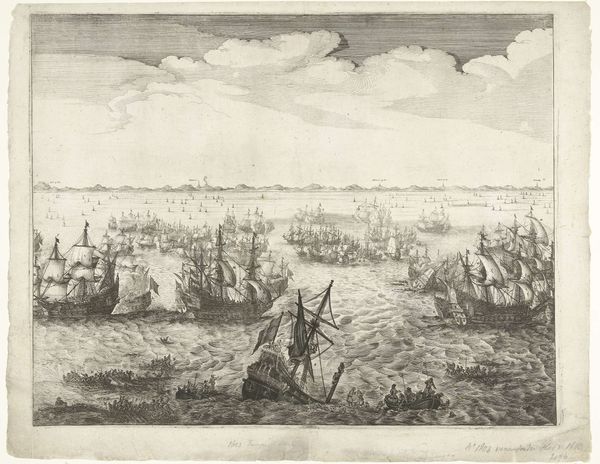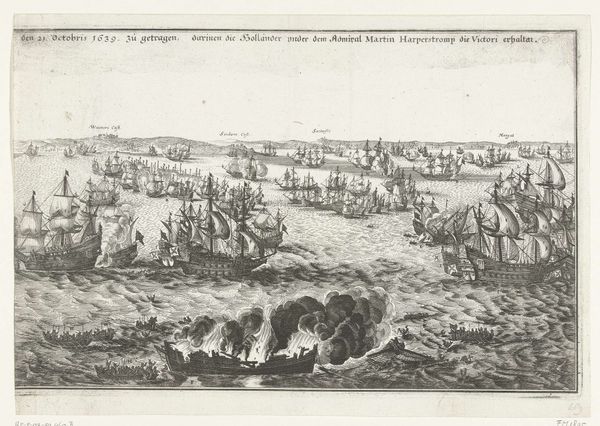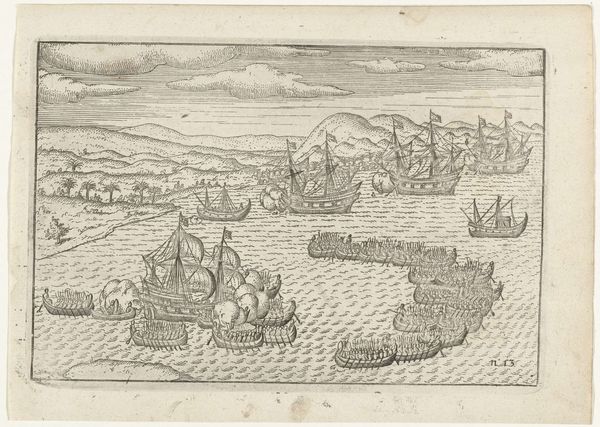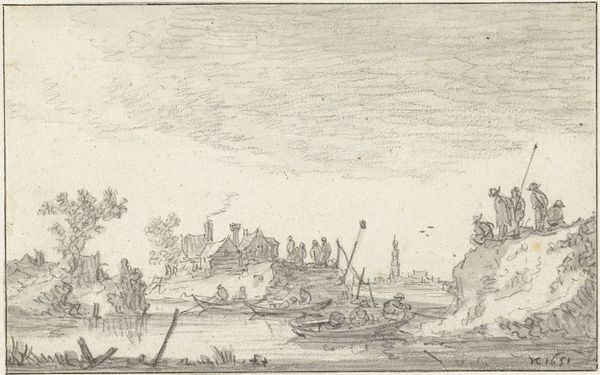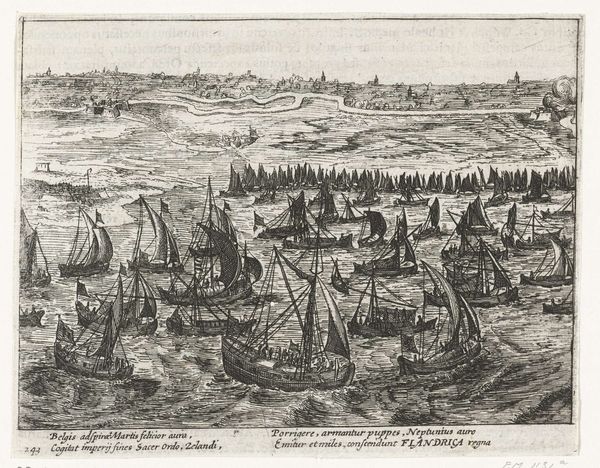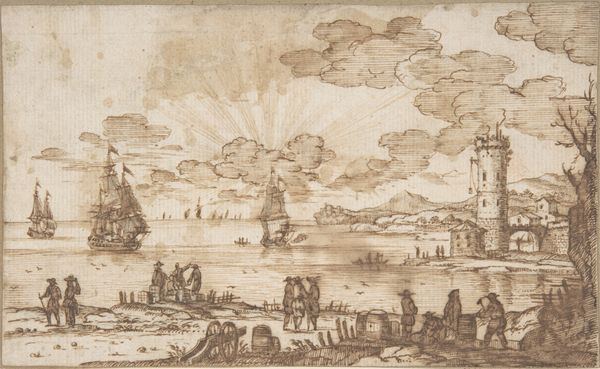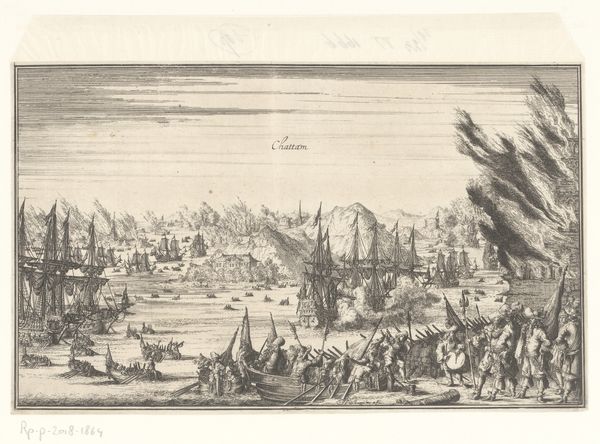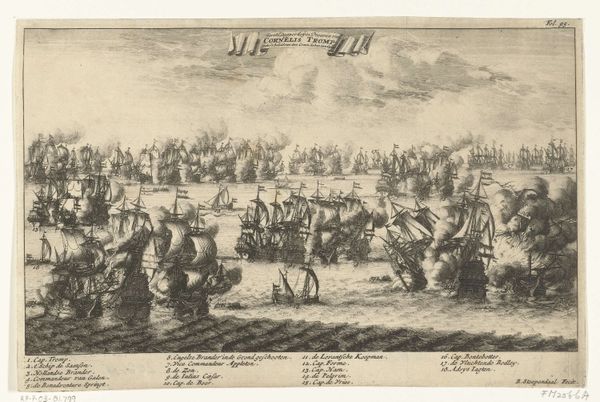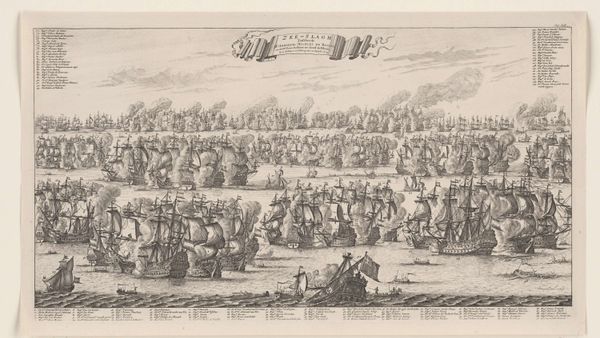
drawing, print, ink, engraving
#
drawing
#
narrative-art
#
dutch-golden-age
# print
#
landscape
#
ink
#
cityscape
#
engraving
Dimensions: height 240 mm, width 492 mm
Copyright: Rijks Museum: Open Domain
Curator: Look at the incredible detail in this print, "The Fleet Landing at Philippine, 1600," attributed to Bartholomeus Willemsz. Dolendo. The Rijksmuseum houses this stunning depiction rendered in ink, showcasing both his drawing and engraving prowess. Editor: My first impression is one of organized chaos, strangely balanced. The sheer number of ships converging on the land creates a visual cacophony, yet the artist’s precise rendering maintains a remarkable clarity. There's a controlled energy in it, if that makes sense. Curator: Absolutely. Think about the cultural significance here: Dolendo presents the Dutch Republic flexing its naval power during the Eighty Years' War. This image becomes a symbol of national pride, an exercise in constructing the Republic's self-image through military victories. Consider how prints like this served as accessible propaganda! Editor: Yes, and it speaks volumes about maritime power as a vital element of Dutch identity. These ships aren't merely vessels; they're extensions of the Dutch will, bearing an entire socio-political order. Look how prominent they are in the foreground, eclipsing the very city they approach. Even more striking are the symbols each ship carries on its sails. You will notice how some of them bear crowns. Curator: A clever detail! Each emblem and figurehead acting almost like individual signatures amidst the armada. Think about how the artist emphasizes order through repetition while individual ships stand out slightly from others. This creates the overall symbolic effect. Editor: I agree. There is a balance of order and individuation within a collective narrative. The city depicted bears many prominent building, including Christian cathedrals, emphasizing what must have been a clash of political, cultural and religious value. Curator: The artist makes very clear references to the existing Dutch culture through imagery, inviting Dutch viewers to see them and find their importance to the ongoing events in Philippine, even while Philippine is yet to become "Dutch". We're seeing both record keeping and soft propaganda. Editor: Well, I found that really fascinating, discovering these layers of history, purpose, and symbolism packed into a single image. It offers insight to both cultural attitudes of the time and artistic techniques used in promoting the political narrative.
Comments
No comments
Be the first to comment and join the conversation on the ultimate creative platform.
